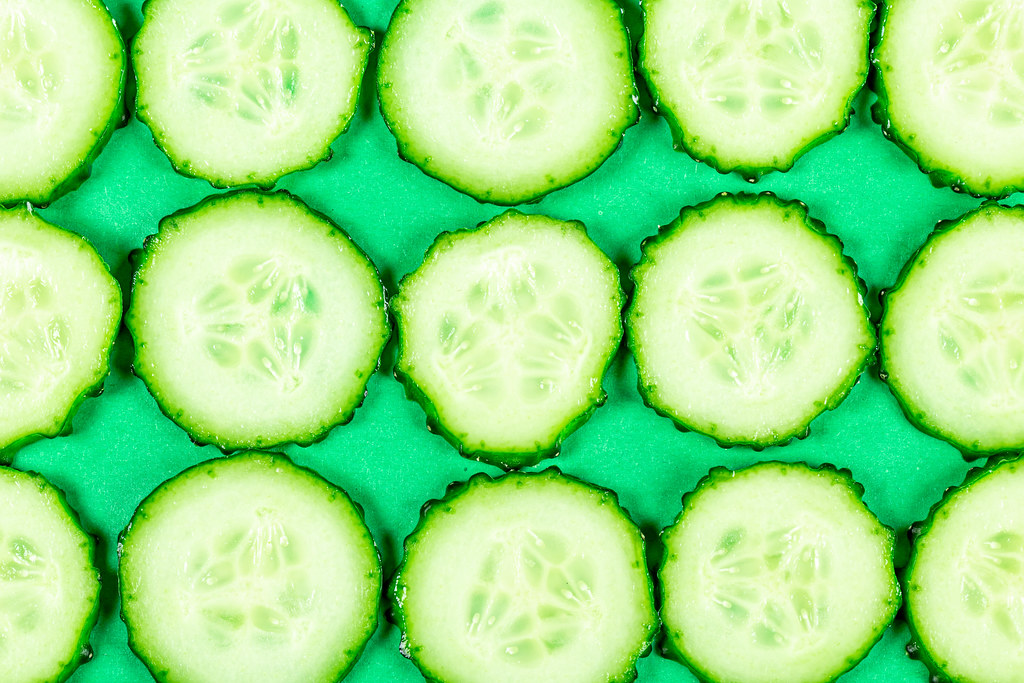This web page was produced as an assignment for an undergraduate course at Davidson College
ThE CsDFB1-CsPHB module CONDUCTS floral organogenesis IN Cucumis sativus L. THROUGH THE transcriptional regulatION of local auxin distribution

With Cucumbers being one of the world’s most important crops (Liu et al. 2018), how many of us have a thorough understanding of the factors that regulate plant development in fruits and vegetables? The journey begins with the phytohormone auxin, and its known responsibility for the production and development of a plant’s organs (Nie et al. 2021). The cells in a tissue known as the meristem later develop into the rest of the tissues and organs that typically occur in plants. Therefore, within the meristems auxin influences foundational processes such as cell division, elongation, vascular differentiation, and floral organogenesis (Brumos et al. 2018).
The local biosynthesis of auxin and polar auxin transport ensure that the necessary auxin gradients are established in order to regulate the processes mentioned in the previous sentence. Moreover, there is substantial evidence regarding the transcription factors that contribute to the regulation of auxin. For instance, the YUCCA and PIN genes demonstrate strong gene expression during boundary formation of floral organs (Nie et al. 2021).
A specific investigation concerned with discovering the regulatory pathway responsible for the distribution of auxin can be seen in Nie et al’s , “Transcriptional control of local auxin distribution by the CsDFB1-CsPHB module regulates floral organogenesis in cucumber”. The authors report the unexpected expression of the CsDFB1-CsPHB module acting in local auxin distribution which governs floral organogenesis in cucumbers
Nie et al interest in auxin distribution and its relation to floral organogenesis began with performing RNA seq analysis, a method used to measure gene expression through RNA fragmentation, sequencing, and computational analysis (Owens et al. 2019). They applied this to the floral meristems of cucumbers to determine which genes were demonstrating significant expression during the biosynthesis of auxin and polar auxin transport. Although there were several other transcripts of genes known for floral development, the results demonstrated an unexpected expression of the Csa7G067350 gene encoding an unknown protein. In fact, they determined that Csa7G067350 was revealing expression in various organs and tissues, suggesting a possible function in floral organogenesis and vascular development. The authors were genuinely surprised to discover the Csa7G067350 gene demonstrating expression because it belongs to a certain group of proteins known as cysteine proteases. According to Nie et al they are commonly recognized for their defense responses in plants.
Their curiosity got the better of them and they decided to explore the molecular function of Csa7G067350 in cucumber. Nie et al generated cucumber lines with an over expression of the Csa7G067350 gene’s RNA levels alongside a wild type sample with lower levels. They compared the samples through Reverse transcription quantitative real-time polymerase chain reaction (RT-qPCR), a method used for the detection of mRNA in tissues or body fluid samples (Du et al. 2017). The samples with an overexpression of Csa7G067350 RNA levels displayed deformed phenotypes in comparison to wild-type samples. Interestingly, the wildtype produced more floral organs in comparison to the samples with an overexpression. This inspired Nie et al to name the protein that the Csa7G067350 gene encodes for DEFORMED FLORAL BUD1 (CsDFB1).
The accumulation of evidence led the authors to hypothesize that CsDFB1 regulates auxin homeostasis. They performed another RNA-seq analysis on the samples they previously generated to further analyze what the expression of genes, or lack thereof, can reveal. The results highlighted that multiple YUCCA genes were expressed. As mentioned previously, YUCCA genes are one of the two known auxin biosynthetic genes that serve as transcription factors for the regulation of auxin. This specific finding left Nie et al confidently proposing that CsDFB1 most likely affects floral organogenesis through the biosynthesis of auxin and polar auxin transport. They also tested for the potential for interaction between CsDFB1 and regulators of auxin. Fluorescence assays showed that CsDFB1 interacts with CsPHB, an HD-ZIP III transcription factor involved in regulating auxin homeostasis.
In essence Nie et al’s research revealed a regulatory pathway of local auxin distribution and polar auxin transport during floral organogenesis. Because the research was limited to Cucumber, further steps should be taken to determine if the CsDFB1-CsPHB module plays the same role in other plant species. In doing so, these findings could be used to manipulate the development of a plant growing in unfavorable conditions.
Oscar Lacayo is an undergraduate Biology major from Davidson College. Contact him at oslacayo@davidson.edu
RESOURCES
Brumos J., L. M. Robles, J. Yun, T. C. Vu, S. Jackson, et al., 2018 Local Auxin Biosynthesis Is a Key Regulator of Plant Development. Developmental Cell 47: 306-318.e5. https://doi.org/10.1016/j.devcel.2018.09.022
Du S. H., D. R. Li, H. J. Wang, and Q. Wang, 2017 [Application of RT-qPCR in the Study of Forensic Pathology]. Fa Yi Xue Za Zhi 33: 526–531. https://doi.org/10.3969/j.issn.1004-5619.2017.05.017
Liu X., T. wang, E. Bartholomew, K. Black, M. Dong, et al., 2018 Comprehensive analysis of NAC transcription factors and their expression during fruit spine development in cucumber (Cucumis sativus L.). Hortic Res 5. https://doi.org/10.1038/s41438-018-0036-z
Nie J., N. Shan, H. Liu, X. Yao, Z. Wang, et al., 2021 Transcriptional control of local auxin distribution by the CsDFB1-CsPHB module regulates floral organogenesis in cucumber. PNAS 118. https://doi.org/10.1073/pnas.2023942118
Owens N. D. L., E. D. Domenico, and M. J. Gilchrist, 2019 An RNA-Seq Protocol for Differential Expression Analysis. Cold Spring Harb Protoc 2019: pdb.prot098368. https://doi.org/10.1101/pdb.prot098368